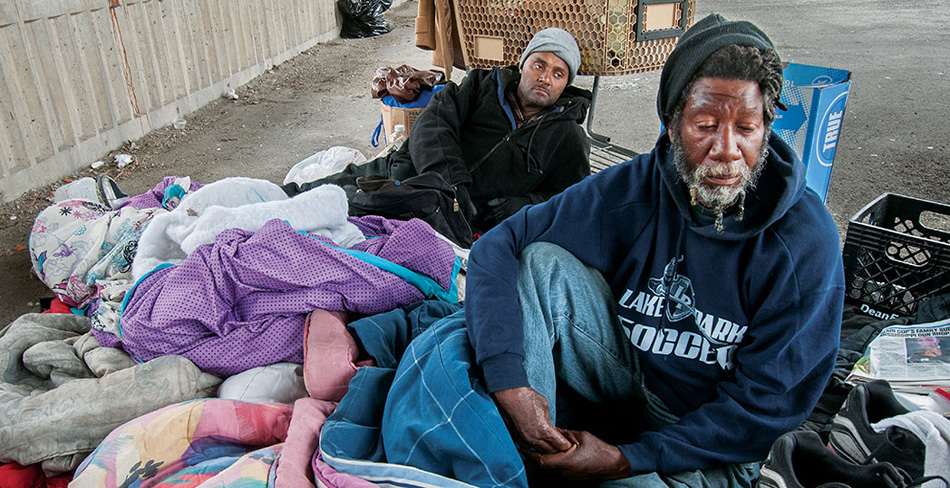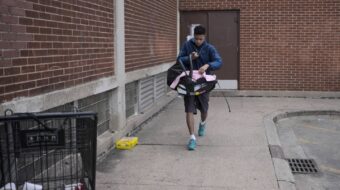
Chicago’s homeless community was served a 30-day notice to evacuate the viaducts at Lawrence and Wilson avenues. The collective of displaced individuals, who have long called “Tent City” their home, range from young to old; several have found themselves dealing with the reality of limited housing options in a city with rising rent costs.
Uptown has been home to the makeshift community for several years, with dozens of tents lined up underneath the Lake Shore Drive viaduct, and an estimated 75 individuals residing beneath the bridge. The crumbling infrastructure has posed problems for community members across the board, making it difficult for some of the homeless residents to stay stationed there. The original bridge, which was built in 1933, is crossed by motorists approximately 100,000 times per day, increasingly disintegrating the concrete structure. It has been notoriously referred to as one of the most structurally deficient bridges in the state.
The city originally claimed that the area needed to be cleared in order to make space for renovations, however recent announcements indicated that they were also planning on using the opportunity to construct bike lanes alongside the sidewalk area. The creation of such lanes has stirred controversy among many of the residents of “Tent City” because it will ultimately minimize the space available to the homeless population.
Homeless advocacy groups have voiced concern that the new bike lanes are simply an excuse to displace the homeless individuals from their only home, and have been discussing moves towards a potential lawsuit. According to The Chicago Tribune, attorneys for the Chicago Coalition for the Homeless want to stop the city’s plans to put bike paths on the wide sidewalks under the bridges, claiming that they are leaving the community homeless population with no feasible alternatives. For years, Uptown had dealt with devastating losses of the district’s resources, from the shutdown of mental health facilities, to the increasing gentrification and displacement of the neighborhood’s more diverse communities.
As the north side’s neighborhood’s growing popularity has attracted droves of new residents to the area, the gentrification of the area has become increasingly apparent. Much of the neighborhood has transformed into a more “modern” and accessible area for incoming inhabitants. In the last decade both a Target and Mariano’s have been added to parts of North Broadway, as well as a number of other pop-up business ventures. According to a DNAInfo analysis of Census data, the white population has increased from 42 percent to nearly 54 percent of the population. Since 2000, nearly 2,200 white individuals have moved to the area, bringing with them the increasing construction of luxury condo developments and rising property values.
The inhabitants of “Tent City” are being told they have until 7 a.m. on Sept. 18 to vacate the premises. Many fear that they will permanently lose their spot under the viaduct and hope that they can garner enough support to save their long-standing community. In the meantime, representatives from social-service agencies are encouraging them to reach out to other shelters for housing support. Residents are being directed to a number of alternative shelter options, including Northside Housing and Support Services (941 W. Lawrence Ave.), Cornerstone Community Outreach (4628 N Clifton Ave.), or Pacific Garden Mission (1458 S. Canal St.).












Comments